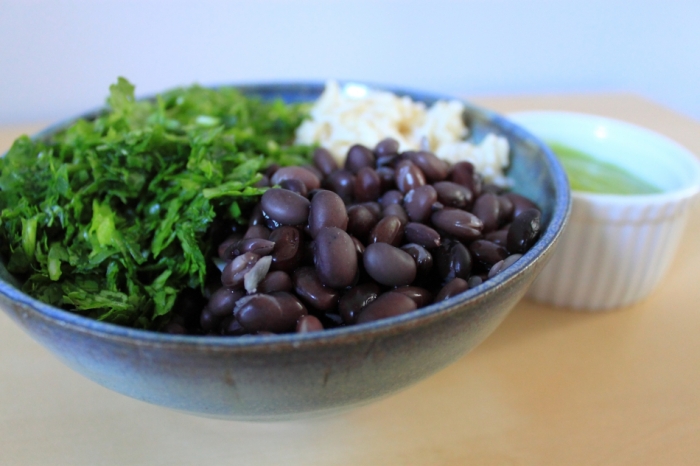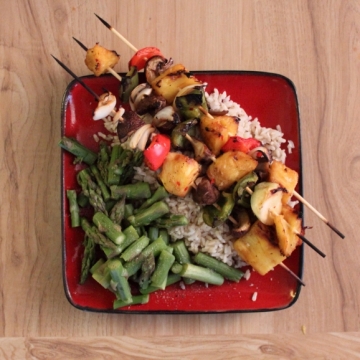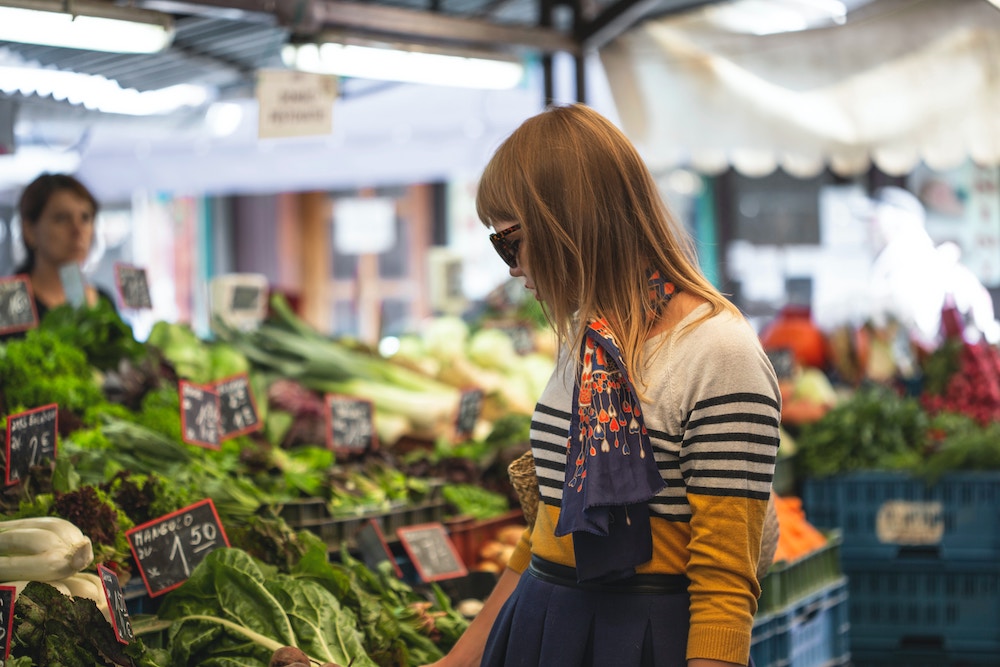In workshops and classes I emphasize looking inward to discover your personal motivation to eat a healthy plant-based diet. Many people share their desire to look and feel healthy and vibrant as a top motivator. Excess weight is a common indicator for health issues, and in June 2013 the American Medical Association officially recognized obesity as a disease. Maintaining a healthy weight range is not just a matter of confidence anymore, but a health mandate. A whole foods plant-based diet can help you invite health into your life as you lose weight and feel great. But this plan of eating is not like the infomercials on TV. There is no infrastructure, no DVD set, no equipment to buy, no subscription, and unlike the products and programs on TV this time of year, great results are typical.
Calories in < Calories burned = Weight loss
Common dietary advice says that in order to lose weight, calories consumed must be less than calories burned. You’ve likely heard the advice before: eat less, move more! The traditional advice is sound, except for one vital flaw. It’s not the calories you eat that matter; it’s the calories used by the body that can contribute to weight gain. Fiber prevents some of the calories in food from being used by the body.
 Fiber is indigestible and carries some of the nutrients–and their calories–out of your body. A 1000 calorie meal of oily pizza and rich chocolate cake will be transported to your fat cells quickly and easily. A 1000 calorie meal of fiber-rich beans, greens, and grains will not contribute as many calories to your body, giving you a weight-loss advantage. But taking fiber in a supplement form won’t work—the fiber needs to “hold hands” with the fat, protein, and carbohydrates present in food in order to escort calories from these nutrients out of the body. When we eat whole plant foods, we allow the fiber naturally found in those foods to take some calories with it as it goes through our digestive system and exits the body as waste.
Fiber is indigestible and carries some of the nutrients–and their calories–out of your body. A 1000 calorie meal of oily pizza and rich chocolate cake will be transported to your fat cells quickly and easily. A 1000 calorie meal of fiber-rich beans, greens, and grains will not contribute as many calories to your body, giving you a weight-loss advantage. But taking fiber in a supplement form won’t work—the fiber needs to “hold hands” with the fat, protein, and carbohydrates present in food in order to escort calories from these nutrients out of the body. When we eat whole plant foods, we allow the fiber naturally found in those foods to take some calories with it as it goes through our digestive system and exits the body as waste.
1 Gram carbohydrate (plants) = 4 calories
1 Gram protein (plants, meat) = 4 calories
1 Gram fat (meat) = 9 calories
Fiber is just one way that a vegan diet keeps calories low. A whole foods plant-based diet is naturally very low in calories, so vegans get to eat a much higher quantity of food per calorie than other people. A 3 oz serving of steak (about the size of a deck of cards) is around 240 calories, but for that same 240 calories a vegan might eat a salad of 1 cup chopped kale, ½ cup black beans, ½ cup brown rice with a little avocado & lime dressing. Which would be more filling? Which would be more flavorful, fresh and delicious?
 Not all vegan diets are created equal when it comes to weight loss. Calories from imitation meats, faux cheeses, and oils can add up quickly. That’s because these products are processed into food items that don’t at all resemble their ingredients. Plant foods that look very similar to how they were grown are the best to choose, and they will keep calories in your diet low while letting you feel full. Imagine which is more filling: a 120 calorie glass of orange juice (1/2 cup), or 3 whole oranges? The oranges are the better “whole food” vegan choice because they look just like they did when they were grown on a tree, so they still have all of their bulk and fiber.
Not all vegan diets are created equal when it comes to weight loss. Calories from imitation meats, faux cheeses, and oils can add up quickly. That’s because these products are processed into food items that don’t at all resemble their ingredients. Plant foods that look very similar to how they were grown are the best to choose, and they will keep calories in your diet low while letting you feel full. Imagine which is more filling: a 120 calorie glass of orange juice (1/2 cup), or 3 whole oranges? The oranges are the better “whole food” vegan choice because they look just like they did when they were grown on a tree, so they still have all of their bulk and fiber.
Best of all, a vegan diet has all of the benefits of a low-calorie, high-fiber diet with no calorie counting required. “Counting calories” became popular in the 80’s among dieters, and the trend has come back into fashion as meat-based high protein diets have failed. Just listen to the signals your body sends saying “I’m hungry” or “I’m full” and eat ad libitum: whenever you want. Starchy vegetables such as beans, winter squash, grains, and potatoes will give your body the energy it needs while naturally contributing fewer calories.
If you are looking for a way to lose weight in the new year, try the gentle approach of eating whole, plant-based foods. Give mom’s advice a try, and “eat your fruits and veggies!”
Also by Chelsea: Peaceful Approach to Family Mealtime
Vegan Freezer Food: Penne & Peas “Alfredo” Casserole
Why Potatoes are Healthy–Plus Broccoli Stuffed Baked Potatoes Recipe!
__
Photo: Chelsea Ihnacik/ Whole New World





